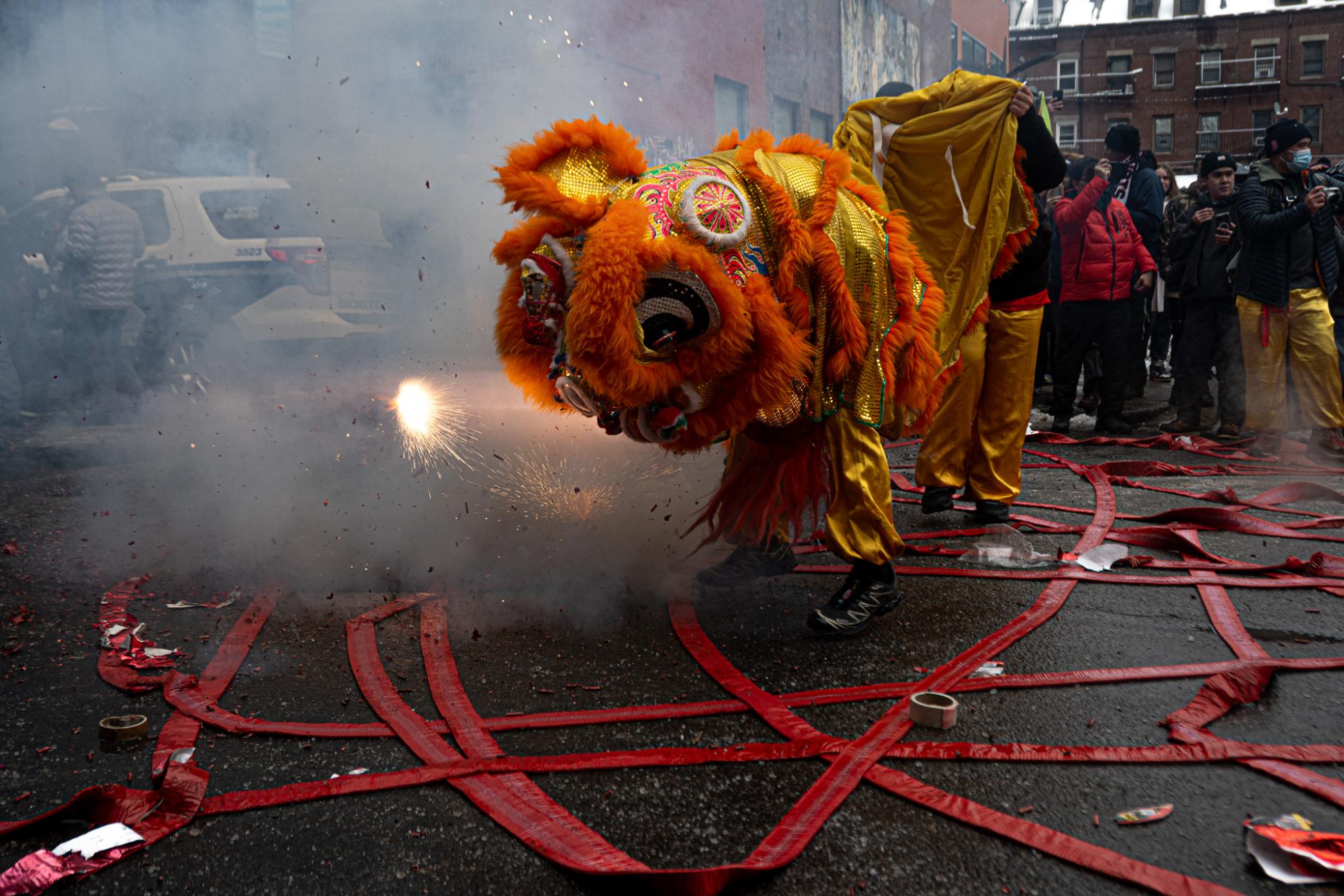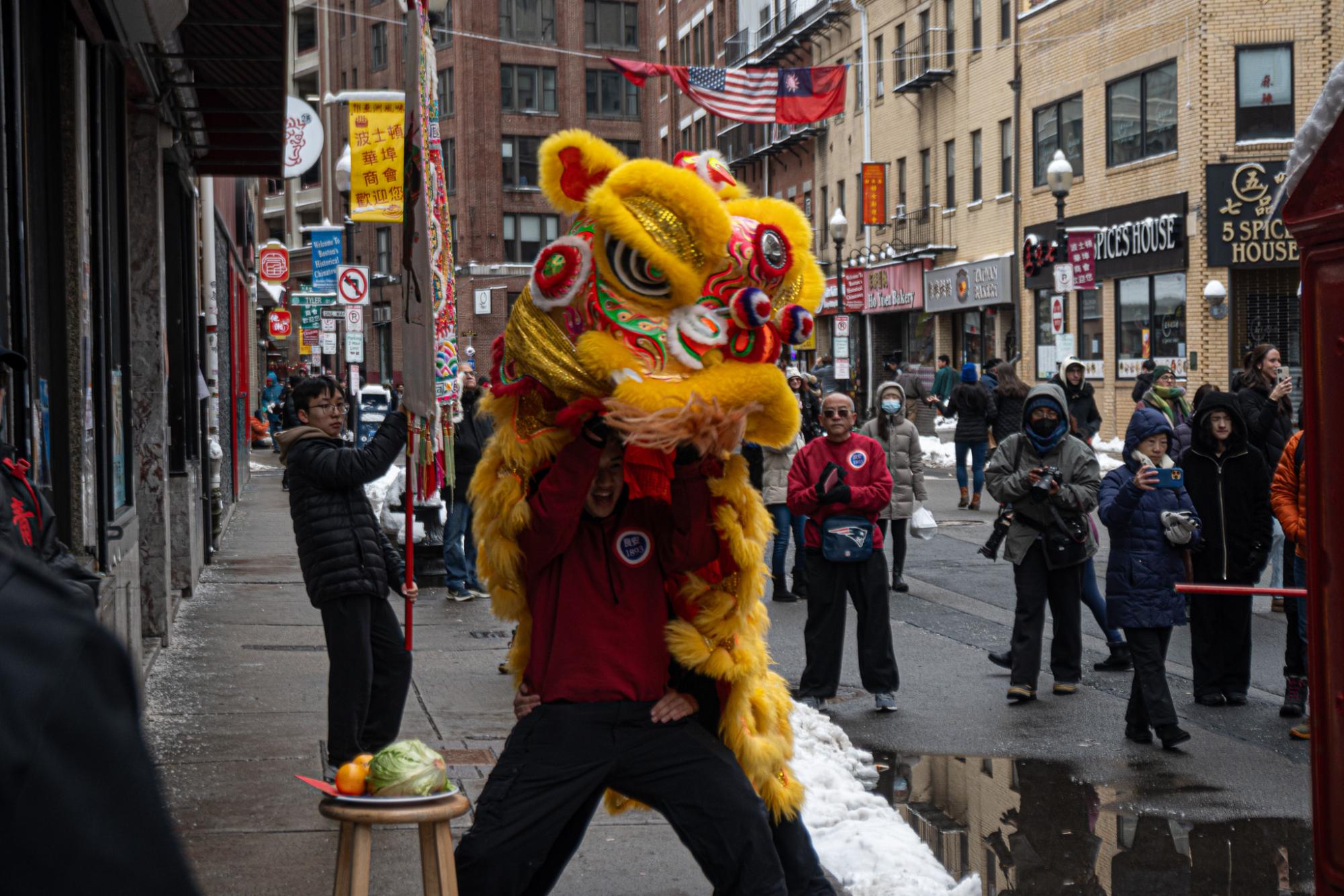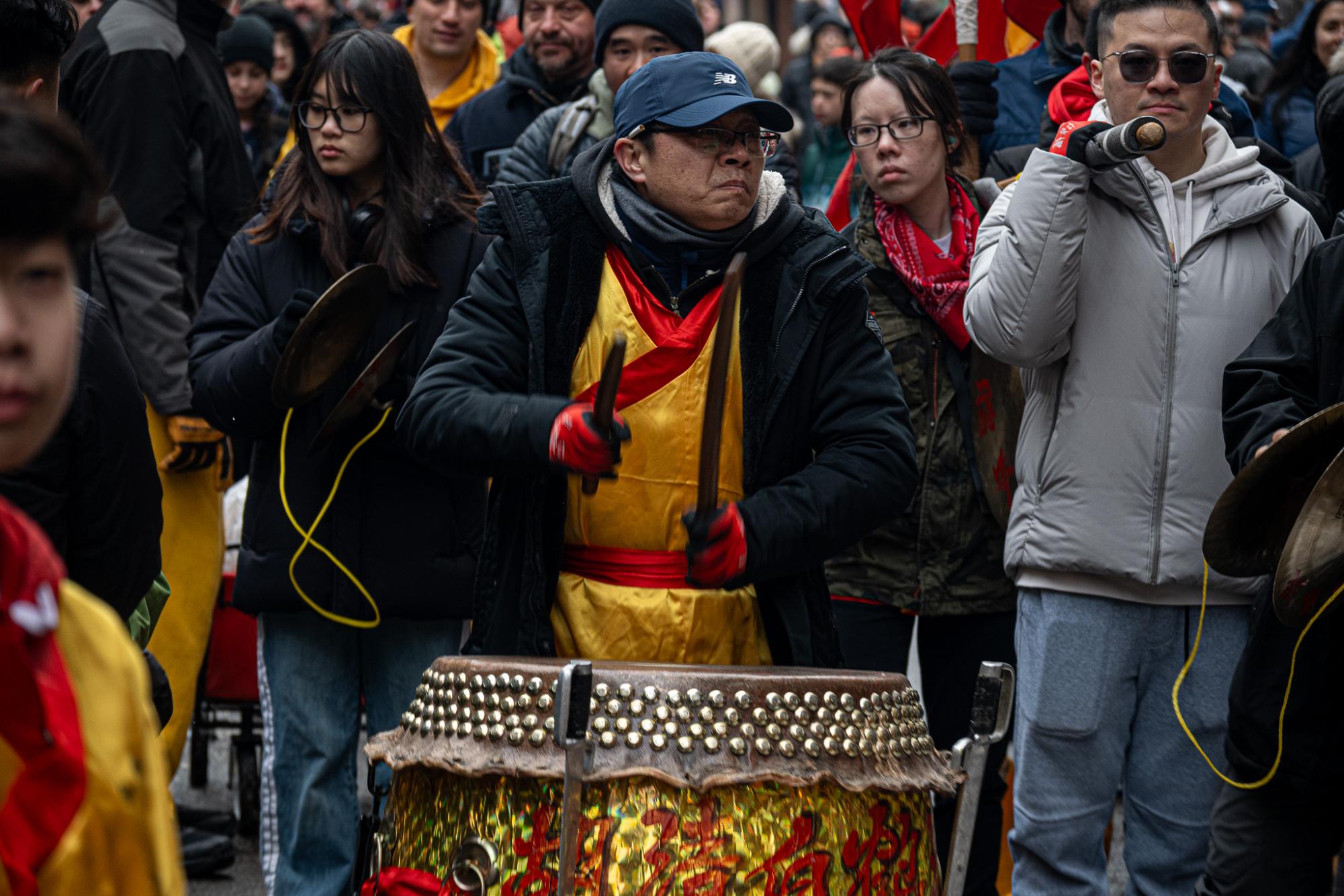Hundreds gathered in Boston’s Chinatown to celebrate the annual Lunar New Year parade on Sunday morning, despite the heavy snowfall the night before and early in the morning.
The event kicked off at 11 a.m. near Phillips Square with colorful lion and dragon dancers and introductory speeches welcoming in the Year of the Snake. The speakers included Mayor Michelle Wu, City Council President Ruthzee Louijeune, City Councilor At-Large Henry Santana, and Boston Police Commissioner Michael Cox.
“The snow came at the perfect time, and so I’m really grateful to all of our city workers who worked all night so that the streets could be clear and we could all be here to support our businesses,” Wu said. “Clap and cheer for all of the lion and dragon dance troupes and to make sure that we’re ringing in the new year altogether.”
Cox thanked the residents of Chinatown for helping make Boston one of the safest cities in the country, calling them one of their “strongest and best partners.”
“Thank you for your partnership,” Cox said. “We look forward to a blessed new year coming up.”

Lunar New Year is a 15-day celebration that begins with the first new moon of the lunar calendar and ends with the first full moon. It is a primarily Chinese holiday but is also celebrated in other Asian communities such as South Korea and Vietnam. This year, Lunar New Year began on Jan. 29, and will officially conclude on Feb. 12.
The annual parade is organized by the Chinese Consolidated Benevolent Association of New England (CCBA), a partner of Chinatown Main Street. The CCBA of New England was founded in 1923 and serves as an umbrella organization for 35 Chinese-American associations and organizations. The CCBA’s mission is to “promote and preserve Chinese culture and tradition,” according to their website. The parade has been an annual tradition for over 70 years and has never been cancelled for weather.
While the turnout was not as overwhelming as last year’s parade, Felix Lui, president of New England’s CCBA since 2022, was pleased that so many had braved the cold for the event.
“Last year there were much more people because of the good weather,” Lui said. “But this year turned out nice compared to the snow we had.”
Following the opening ceremony, lion dancers spread out across the neighborhood. Chinatown businesses left out oranges and heads of lettuce to welcome and bless the various troupes. Both oranges and lettuce are considered symbols of good luck and prosperity. As the accompanying music crescendos, the lions accept the blessing from the store by bowing, “eating” the produce, and then tossing it into the air. The store then “feeds” the dancers a red envelope to ensure a prosperous year for their business. Before the procession moved on to the next storefront, they set off deafening firecrackers, filling the air with smoke and confetti. At larger store fronts or restaurants, the lion dancers entered to greet patrons.
The lions, each operated by two dancers, moved to the rhythmic sounds of cymbals, drums, and gongs. One dancer controls the head of the lion, while the other controls the tail and the steps to create life-like movement. The traditional costumes are typically black, green, yellow, or red, and are hand-made. Each pair has unique choreography and is made to convey emotions like joy, respect, anger, or playfulness.

The lion dances weave through the streets with multiple performances happening simultaneously, resulting in a cacophony of firecrackers and drums. They are the main attraction for many spectators.
“They see the people, greet the people, and go to stores and bring good luck to the business and association,” said Lui. “[The dancers] have fun themselves and they draw the people into Chinatown.”
Spectator Nicholas Pontius has been attending Lunar New Year parades since he was a child. He expressed his disappointment in the turn-out, calling the crowd “dead,” in comparison to years prior. Nevertheless, the lion dances did not disappoint, he said.
“The lion dances are the highlight,” Pontius said. “They’ve been pretty awesome.”
Many lion dance troupes were present including the Asian American Cultural Center’s Wah May, the Gung Ho Club, and the Kwong Kow School’s troupe. Jimmy S., a volunteer with the latter, has been participating in the parade for around 20 years. For him, the parade symbolizes a way to connect and celebrate together.
“[The parade] is a way to celebrate Chinese culture, celebrate Chinese New Year, and come together with friends and family to celebrate,” he said.
Parade spectators who wanted a break from the cold or a bite to eat popped into local stores.
Others stopped into Chinatown Main Street’s Cultural Village to do Chinese arts and crafts or calligraphy or observe a quick history lesson on the Chinese zodiac or Chinatown. There were also indoor lion dance performances. Pop-up vendors sold traditional Lunar New Year ornaments, dragon garlands, and lanterns. A man blew up elaborate balloon hats that he handed out to children for free.
Despite the smaller crowd, the celebration continued past the planned 3 p.m. end time, as dedicated lion dancers and spectators continued the revelries until just before 6 p.m., ending with a spectacular show of firecrackers and confetti.
